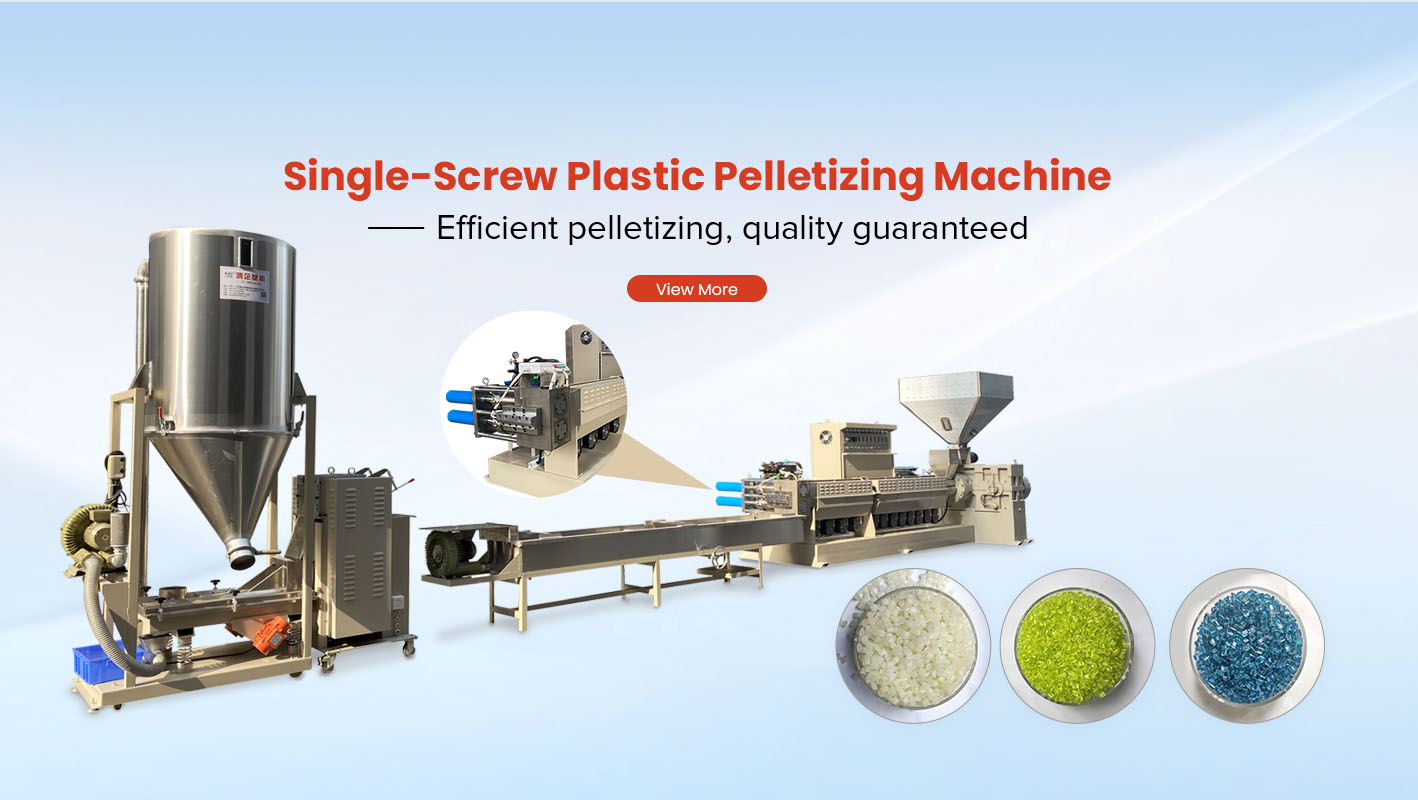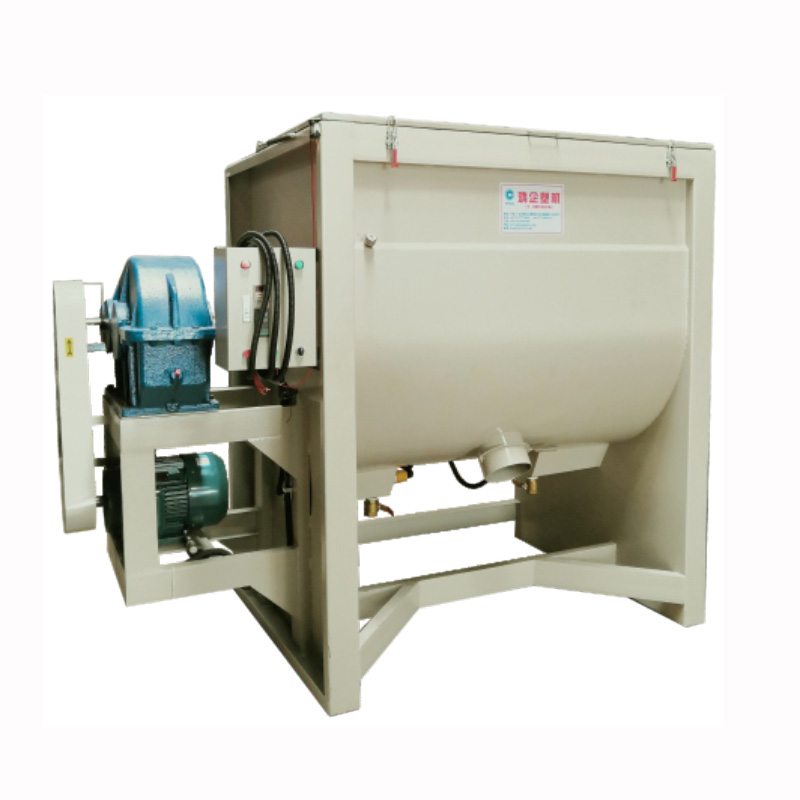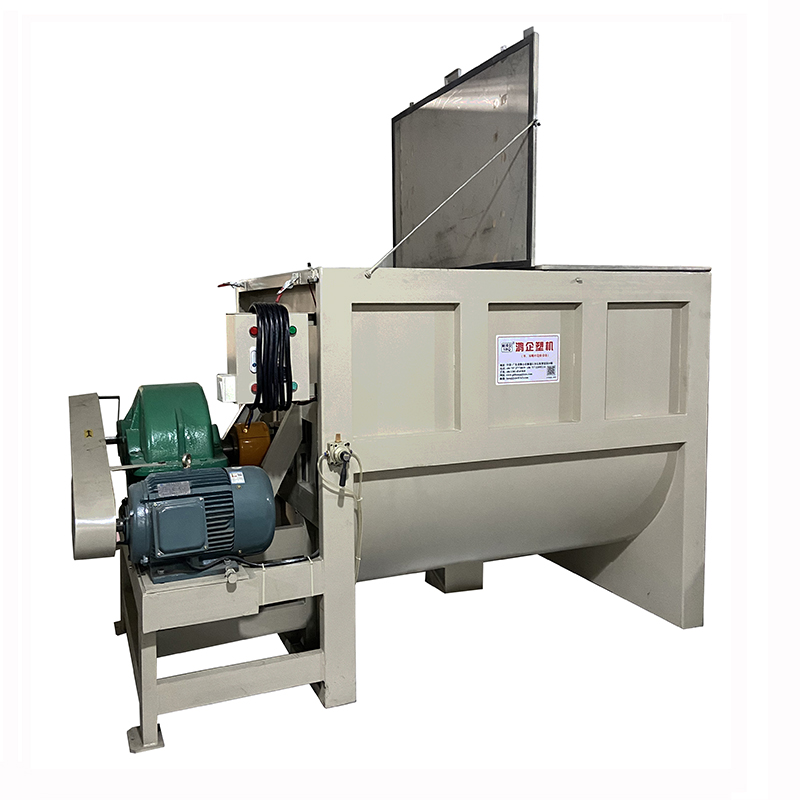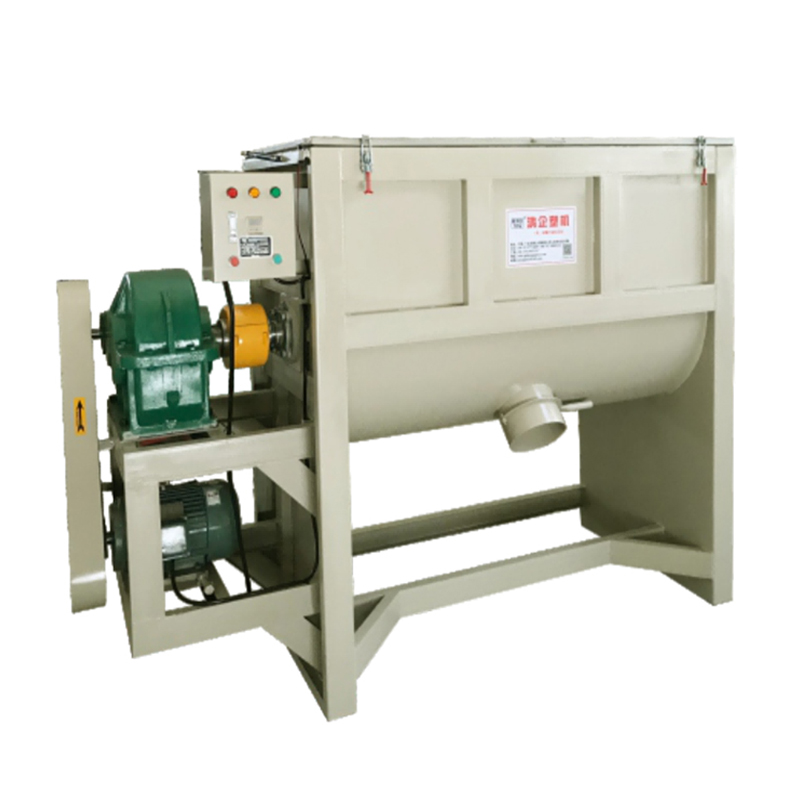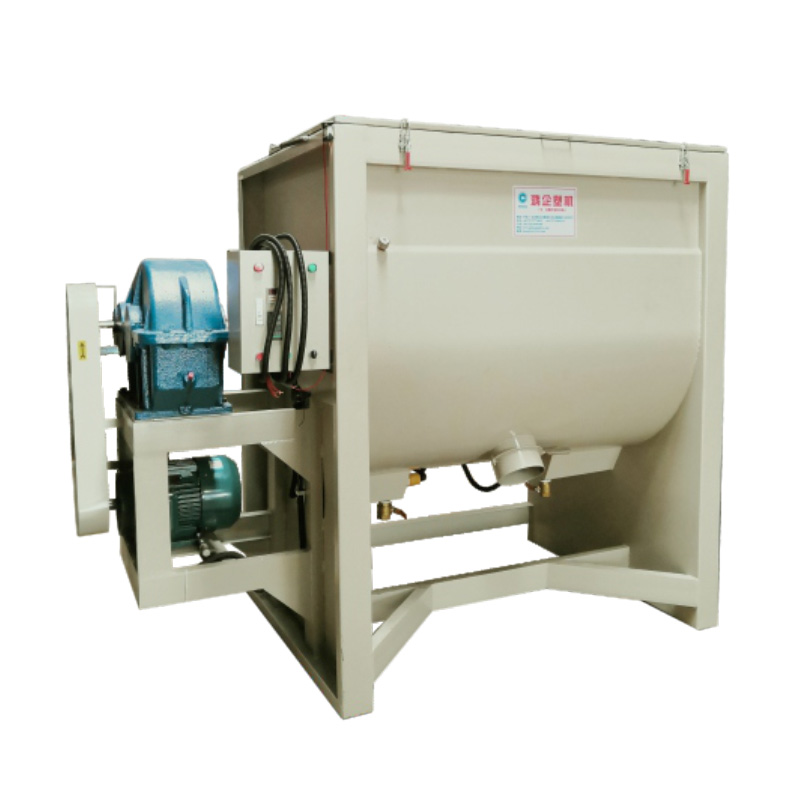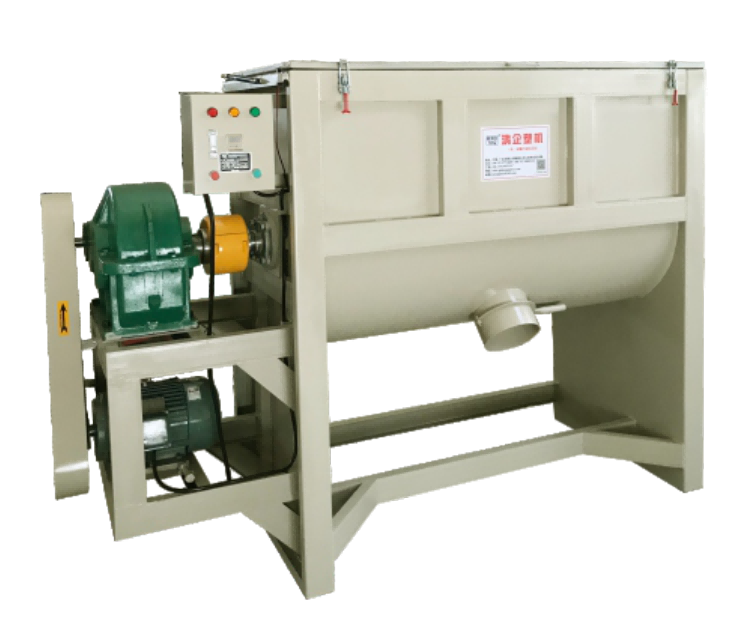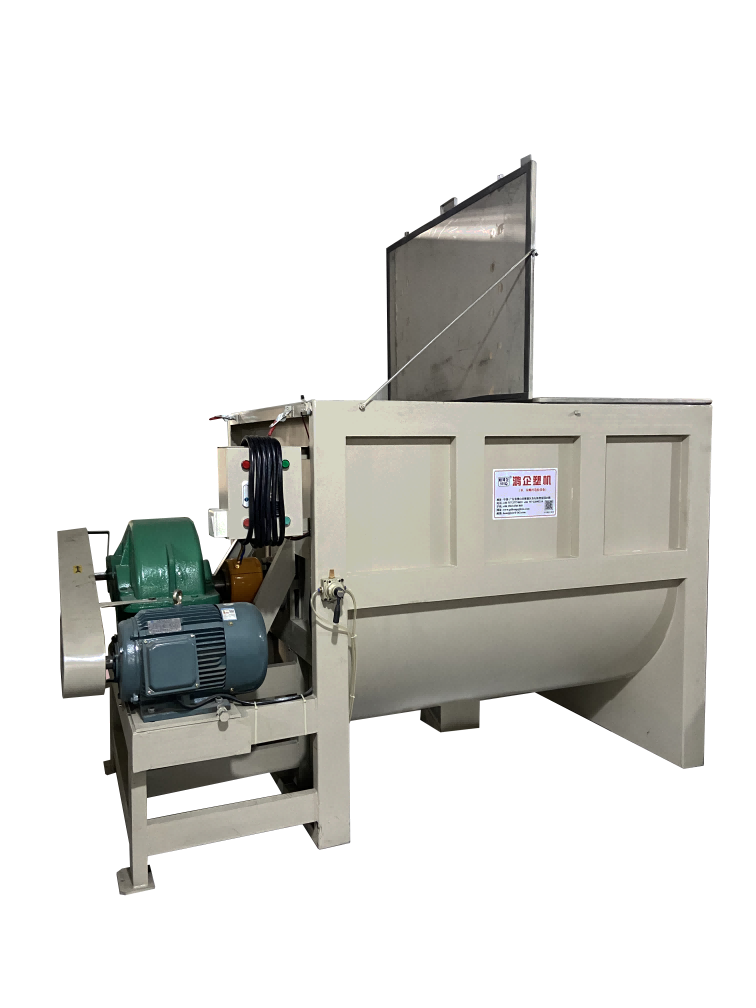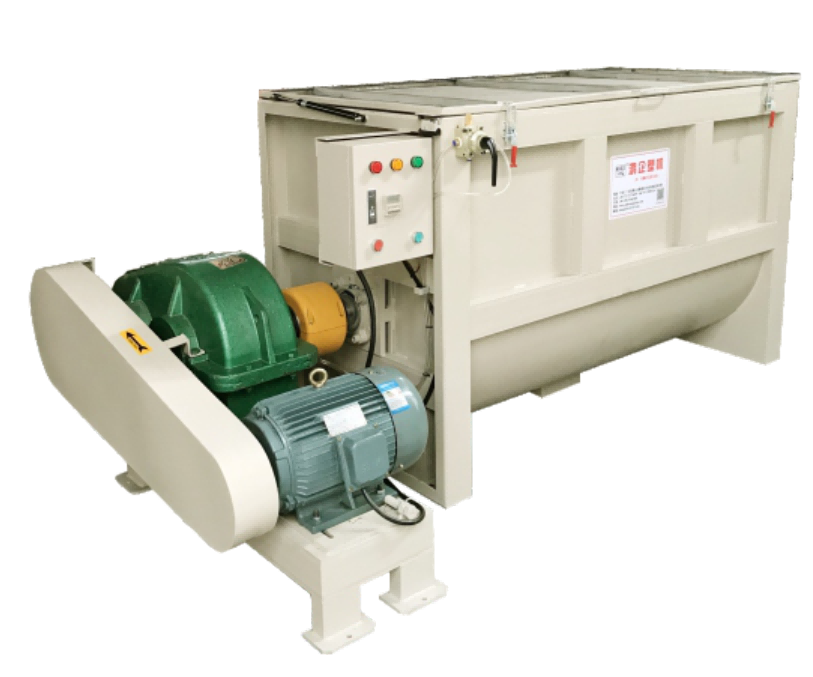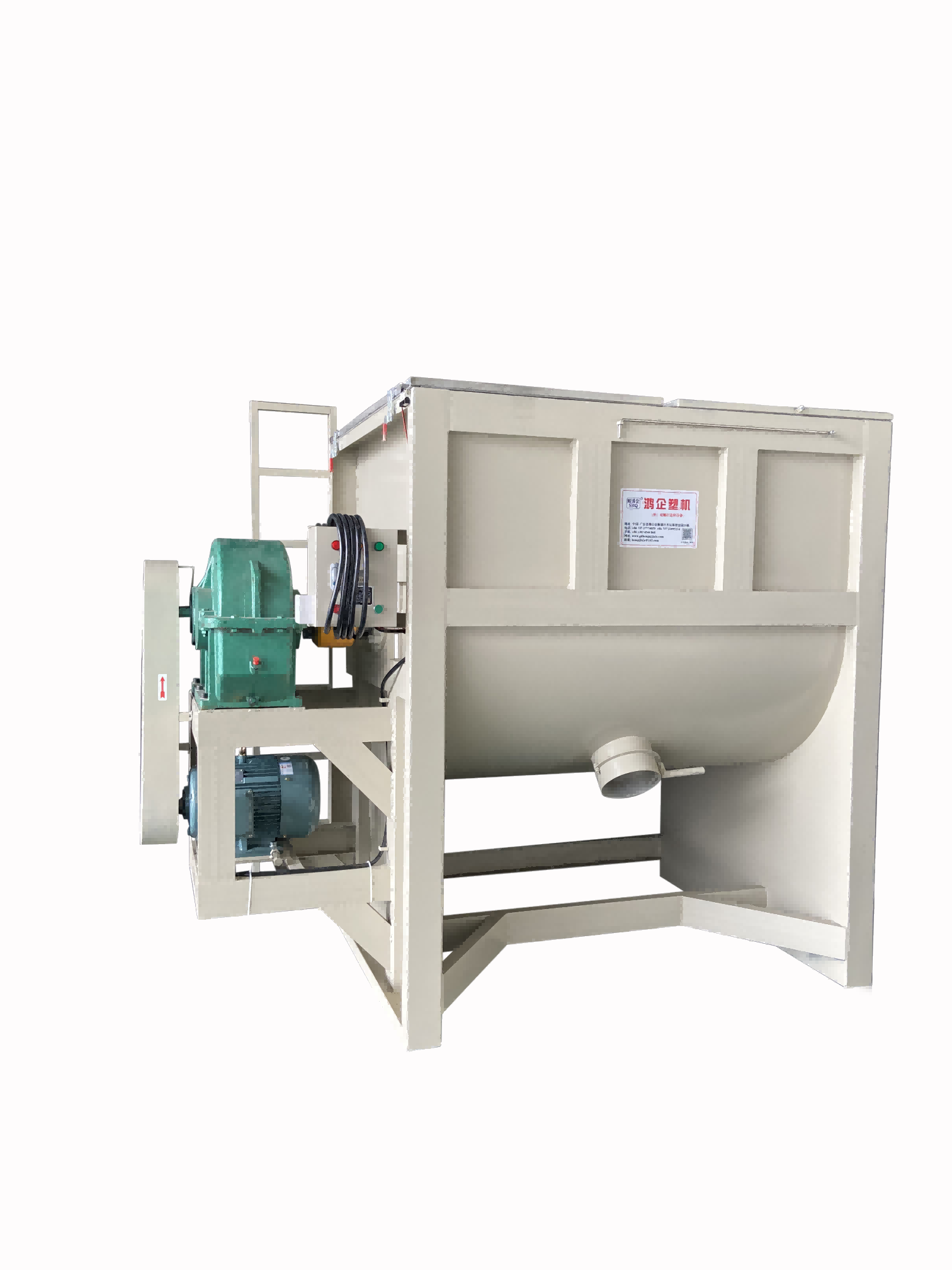Horizontal Ribbon Plastic Blender
- Product Information
The Horizontal Ribbon Blender is an industrial horizontal mixing device designed for uniform mixing of plastic materials, including powders, granules and other plastic compounds. It achieves an efficient mixing process through horizontally rotating twin-shaft impellers, ensuring that the various materials are fully contacted and dispersed during the mixing process. The structural design of this mixer enables it to handle materials of different viscosities and particle sizes, providing a consistent mixing effect to meet the needs of large-scale production. Its working principle is based on two counter-rotating mixing shafts equipped with specially designed blades, which form a horizontal mixing action, thereby achieving uniform distribution and efficient mixing of materials.
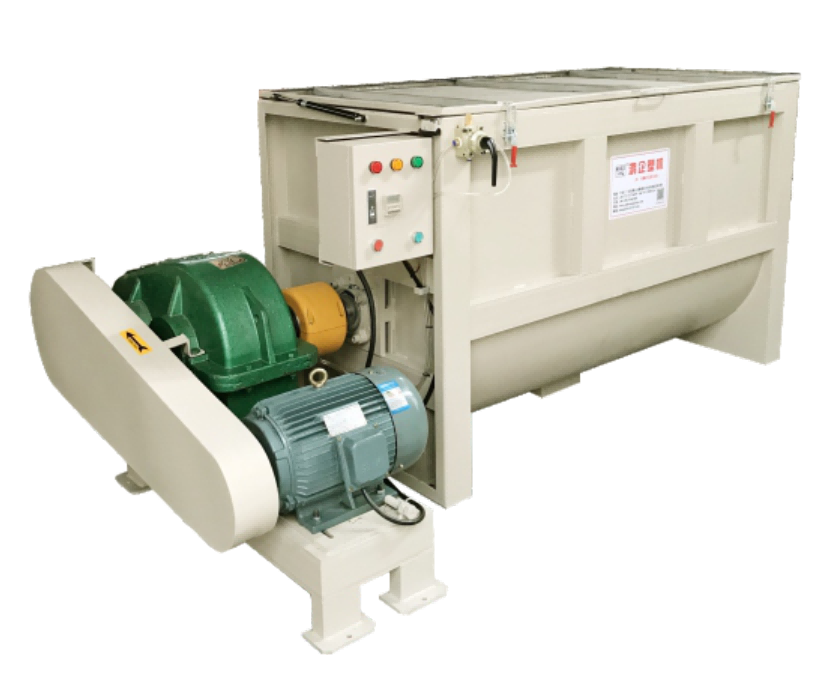
Horizontal Ribbon Blender Features
Material composition: The Horizontal Ribbon Blender is made of stainless steel, with a U-shaped double stirring paddle structure, an outer plate thickness of 4 mm, a side plate thickness of 5 mm, and a blade size of 50 mm by 12 mm. The diameter of the shaft is 89 mm, the diameter of the shaft lever is 50 mm, and the interior is all made of stainless steel, ensuring that the equipment has good corrosion resistance and durability in harsh working environments, while ensuring that the materials in the mixing process are not contaminated.
Mixing capacity: The mixing capacity of this mixer is up to 1000 kg, which can meet the needs of large-scale production. This large-capacity design allows it to maintain efficient mixing performance when handling large amounts of materials, reducing production batches and improving production efficiency. It is suitable for various industrial scenarios that require large amounts of mixed materials.
Motor power: Equipped with an 11-kilowatt motor and a JZQ500 model gearbox, it provides strong power support for the mixer. The high power of the motor ensures that the stirring paddle can drive the materials to mix with sufficient force, even in the face of high-viscosity or difficult-to-mix materials, the mixing effect can be guaranteed. The gearbox helps to effectively transmit the rotational power of the motor to the mixing shaft, ensuring the stability and reliability of the mixing process.
Machine size: The size of the machine is 2650 mm by 1300 mm by 2100 mm. This size design gives it a large footprint, but also ensures the stability of the equipment and sufficient operating space. In addition, the equipment can be customized according to the specific production needs of the user to adapt to different factory layouts and production processes.
Speed and speed adjustment: The standard speed is 18 revolutions per minute, and the speed is adjustable. The mixing speed can be adjusted according to different mixing requirements by equipping it with a frequency converter. This speed adjustment function enables the mixer to adapt to the mixing characteristics of various materials, whether it is light powder or heavy particles, to find the right mixing speed to ensure the uniformity and efficiency of mixing.
Horizontal Ribbon Blender Technical Specifications
Model: HQ-1TH
Material: Material: stainless steel U-shaped double stirring paddle, outer plate thickness 4㎜, side plate 5mm, blade 50*12mm,
shaft 89㎜, shaft lever 50mm, internal stainless steel .
Mixing Capacity: Up to 1000 kg, ideal for large-scale production.
Motor Power: 11KW, gear box JZQ500.
Size: 2650*1300*2100mm, customizable to fit specific production needs.
RPM: 18
Speed (Optional): Adjustable, works with an inverter to meet various mixing requirements.
Horizontal Ribbon Blender Parameters
| Model | HQ-0.5TH | HQ-1TH | HQ-2TH | HQ-3TH | HQ-5TH |
| Power ( KW) | 7.5 | 11 | 18.5 | 22 | 30 |
| Capacity (KG) | 500 | 1000 | 2000 | 3000 | 5000 |
| Dimension (mm) | 2500*900*1700 | 2650*1300*2100 | 3800*1300*2500 | 4420*1650*2500 | 6000*2500*3000 |
| Heating Power (KW) | 6 | 12 | 24 | 24 | 30 |
Horizontal Ribbon Blender Applications
Plastic Industry: In the plastic production process, the Horizontal Ribbon Blender plays a vital role. It can evenly mix various plastic raw materials, such as polyethylene, polypropylene, polyvinyl chloride, etc., with different additives (such as pigments, stabilizers, plasticizers, etc.). Through the precise mixing process, the consistency of physical and chemical properties such as color, hardness, flexibility, etc. of plastic products is ensured, so as to produce high-quality plastic products such as plastic pipes, plastic films, plastic containers, etc.
Chemical Industry: In chemical production, many chemical reactions require the uniform mixing of multiple chemical substances. The Horizontal Ribbon Blender can be used to mix various chemical raw materials, such as powdered chemical reagents, liquid additives, etc. Its efficient mixing ability can ensure that the raw materials of the chemical reaction are evenly distributed in the reactor, promote the smooth progress of the chemical reaction, and improve the reaction efficiency and product quality. At the same time, its stainless steel material can also adapt to the corrosive substances that may exist in the chemical environment.
Food Processing Industry: In food processing, the Horizontal Ribbon Blender can be used to mix food raw materials, such as flour, sugar, spices, pigments, etc. Its uniform mixing effect ensures the consistency of food in taste, flavor and appearance. For example, when producing biscuits, candies, bread and other foods, by accurately mixing various raw materials, you can make products with excellent color, flavor and aroma. In addition, its stainless steel material meets the hygiene standards of food processing and is easy to clean and disinfect to ensure food safety.
Pharmaceutical Industry: In the pharmaceutical process, the formulation of drugs requires precise mixing. The Horizontal Ribbon Blender can evenly mix active pharmaceutical ingredients with excipients (such as fillers, disintegrants, lubricants, etc.) to ensure the dosage accuracy and consistency of the drug. This is especially important for the production of solid dosage forms such as tablets and capsules. Its efficient and uniform mixing process helps to improve the quality and production efficiency of drugs, while meeting the strict hygiene and quality control requirements of the pharmaceutical industry.
Other industries: In addition to the above-mentioned main application areas, the Horizontal Ribbon Blender can also be used in the cosmetics industry to mix various ingredients in skin care products and cosmetics to ensure uniform texture and stability of the products; in the building materials industry, it can be used to mix various powdered building materials, such as cement additives, tile adhesives, etc., to improve the performance of the materials and the construction effect; in addition, it is also widely used in the fields of electronic materials, agricultural fertilizers, etc., to meet the needs of different industries for uniform mixing of materials.
Horizontal Ribbon Blender Maintenance:
Cleaning and sanitation maintenance: After each use of the Horizontal Ribbon Blender, the residual material inside and outside the machine should be cleaned in time. For internal cleaning, a soft brush or compressed air can be used to remove material attachments in the mixing paddle and mixing chamber to avoid hardening of the material and prevent cross-contamination between different batches of materials. The outside needs to be wiped with a damp cloth to remove dust and oil to keep the equipment clean. Regular deep cleaning of the equipment, including disassembly of some parts for cleaning, to ensure the hygiene of the mixing process and the purity of the materials, is particularly important for applications in the food and pharmaceutical industries.
Lubrication system maintenance: Regularly check the lubrication system of the mixer to ensure that all parts that need lubrication, such as bearings, gears and mixing shafts, are fully lubricated. Use appropriate lubricants as recommended by the equipment manufacturer and determine the lubrication cycle based on the frequency of use of the equipment and the working environment. For example, for high-intensity, continuous-duty mixers, lubrication may be required every week or even more frequently. Good lubrication can reduce friction between components, reduce wear, extend the service life of the equipment, and improve the operating efficiency and reliability of the equipment.
Electrical system inspection and maintenance: Regularly check the electrical system of the mixer, including the motor, control box, inverter, and various electrical connection lines. Make sure that the motor wiring is firm and there is no sign of looseness or damage. At the same time, check the running status of the motor and listen for abnormal noise or overheating. For the control box and inverter, keep the inside clean and dry to prevent dust and moisture from entering and causing electrical failures. Check the aging of electrical components and replace damaged or aged parts in time to ensure the normal operation of the equipment and the safety of operators.
Mechanical parts maintenance: Regularly inspect and maintain the mechanical parts of the mixer, focusing on the stirring paddle, shaft, bearings and seals. Check whether the stirring paddle is deformed, worn or damaged, whether the shaft is bent or corroded, whether the bearing runs smoothly without noise, and whether the seal is leaking. If any problems are found, the corresponding parts should be repaired or replaced in time. For example, if the seal of the shaft is found to have material leakage, the seal should be replaced immediately to prevent the material from entering key parts such as the bearing and causing more serious damage. Regular maintenance of mechanical parts can ensure the mixing effect and operating stability of the mixer.
Daily inspection and record keeping: Establish a daily inspection system and conduct a simple appearance inspection and functional test before each use of the mixer. Check whether the equipment has obvious damage or abnormalities, such as oil leakage, leakage, abnormal vibration, etc. During the operation of the equipment, observe its operating status, listen to the running sound of the motor and the mixing shaft, and check whether there is abnormal noise or vibration. At the same time, record the operating parameters of the equipment, such as the motor's current, voltage, temperature, mixing time and speed, etc. Through these records, potential problems of the equipment can be discovered in time, preventive maintenance can be carried out, and production interruptions and material waste caused by equipment failure can be avoided.
Why Choose This Horizontal Ribbon Blender?
The Horizontal Ribbon Blender offers unmatched efficiency and versatility, making it an essential tool for industries that demand consistent and high-quality mixing results. Its robust design, combined with advanced mixing capabilities, ensures that your production processes are reliable and efficient.
Contact us today to learn more about how this mixer can enhance your production capabilities and meet your specific mixing needs.

